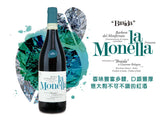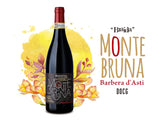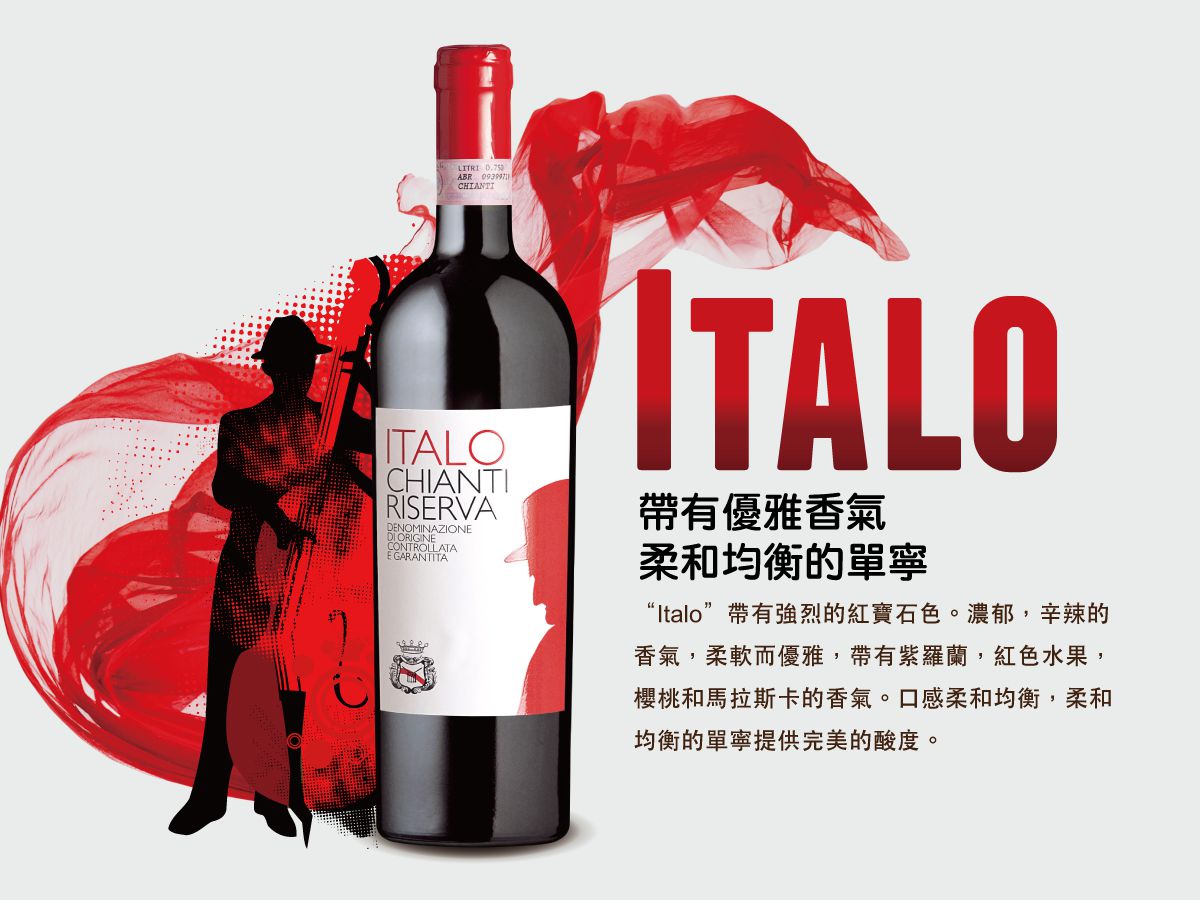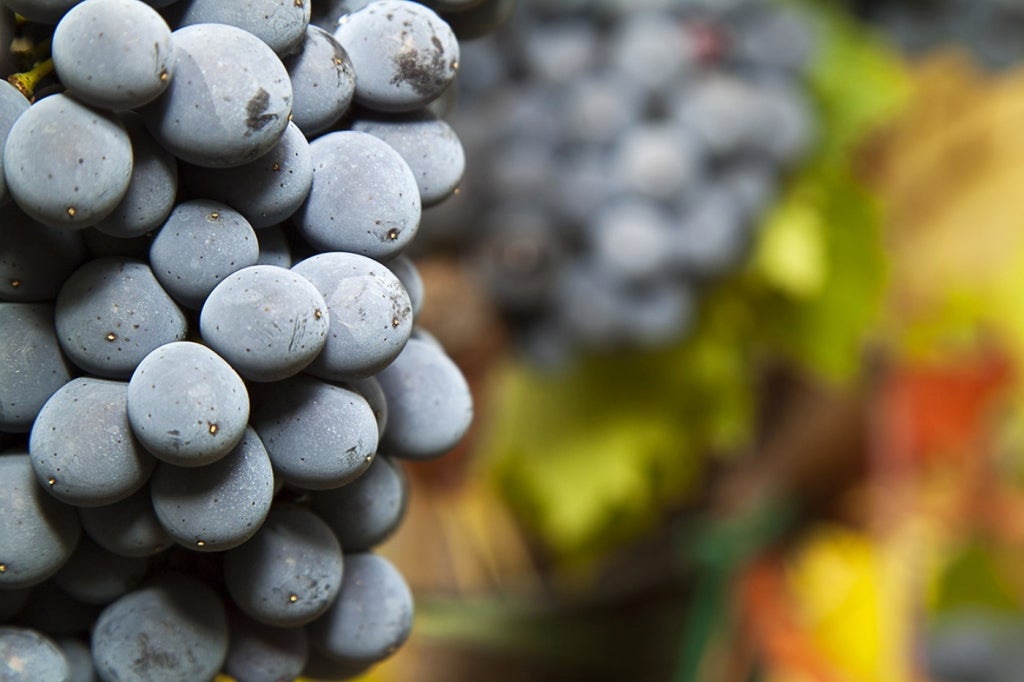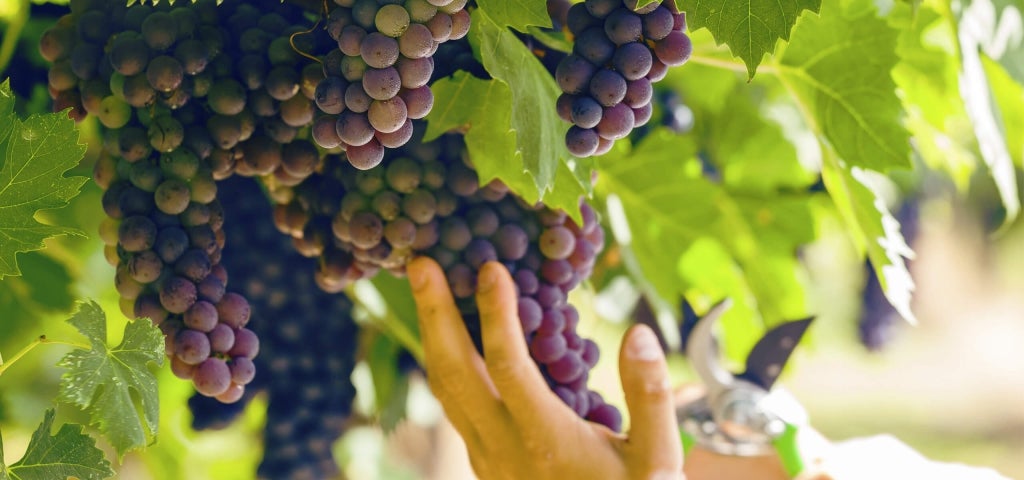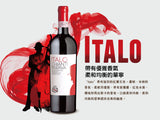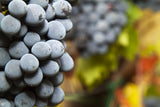| Regions: Italy - Tuscany | Ratings: DOCG |
| ABV: 14% | Decanting Time: At least 45-60minutes |
| Winery: Agricola Tamburini | Grapes: Sangiovese |
| Food Pairing: It goes well with all kinds of cooked meats, bruschetta, thick vegetable soups, or roasted red meats. | |
"Italo" has an intense ruby color. Like its alcohol concentration, it is rich and spicy, yet soft and elegant, with aromas of violets, red fruits, cherries, and marasca. On the palate, it is smooth and balanced, with tame tannins providing the perfect acidity. The grapes used in this wine are 100% hand-selected to guarantee the highest quality selection. Upon arrival in the cellar, it is fermented at a temperature not exceeding 25°C to preserve the bouquet fully.


Agricola Tamburini
Covering an area of more than 50 hectares, the Tambrini winery has been undergoing different technological transformations since 2002. After more than a century of continuous innovation, the old tradition and new technology have been combined in winemaking technology, making the estate in Italy and internationally. Gain a foothold in the market.
The agronomic and technical transformation of the winery has been ongoing, involving 25 hectares of vines and 1,000 olive trees. This has led to the company's presence in the Italian and international markets, with a product portfolio known mainly for its raw materials' quality but never neglecting its origin's typical and traditional characteristics. The entire production of Tamburini extra virgin olive oil is certified organic, and the scale is gradually increasing.
Sangiovese
Sangiovese is a red Italian wine grape variety that derives its name from the Latin sanguis Jovis, "the blood of Jupiter". Though it is the grape of most of central Italy from Romagna down to Lazio (the most widespread grape in Tuscany), Campania, and Sicily, outside Italy it is most famous as the only component of Brunello di Montalcino and Rosso di Montalcino and the main component of the blends Chianti, Carmignano, Vino Nobile di Montepulciano and Morellino di Scansano, although it can also be used to make varietal wines such as Sangiovese di Romagna and the modern "Super Tuscan" wines like Tignanello.
Canaiolo
Canaiolo is a red Italian wine grape grown through Central Italy but is most noted in Tuscany. Other regions with plantings of Canaiolo include Lazio, Marche and Sardegna. In Umbria, a white berried mutation known as Canaiolo Bianco exists. Together with Sangiovese and Colorino it is often used to create Chianti wine and is an important but secondary component of Vino Nobile di Montepulciano. In the history of Chianti it has been a key component blend and during the 18th century may have been the primary grape used in a higher percentage than Sangiovese. Part of its popularity may have been the grape's ability to partially dry out without rotting for use in the governor method of prolonging fermentation. In the 19th century, the Chianti recipe of Bettino Ricasoli called for Canaiolo to play a supporting role to Sangiovese, adding fruitiness and softening tannins without detracting from the wine's aromas. In the aftermath of the phylloxera epidemic, the Canaiolo vines did not take well to grafting onto new American rootstock and the grape began to steadily fall out of favor. As of 2006, total plantings of Canaiolo throughout Italy dropped to under 7,410 acres (3,000 hectares). Today there are renewed efforts by Tuscan winemakers to find better clonal selections and re-introduce the variety into popular usage.



Tuscany, Italy - Successful challenge Bordeaux, France
Tuscany is Italy's most well-known star-producing region, bordered by Emilia-Romagna to the north, Liguria to the northwest, and Umbria and Latium to the south. ), with the Tyrrhenian Sea to the west and an excellent location. Tuscany is to central Italy what Bordeaux is to France.
Chianti wines from Tuscany are inexpensive and very famous. In 1984, Conti wine was included in the list of only 5 DOCG producing regions in Italy. Wines produced in the eight sub-regions of the Chianti DOCG region can all be labeled "Chianti DOCG," but it is worth noting that these wines must use Sangiovese as the leading wine grape. According to different brewing methods, Conti wine presents different styles to people.
In the past, Italian restaurants all over the world used Chianti's straw-basket wine as decoration. These wines are just ordinary goods. Tuscany has seen a wine renaissance over the past decade, with all regions producing quality wines and being the most innovative region in Italy – not only for trying new grapes but also for exploring new areas. Tuscany proved that Italy could also brew Cabernet Sauvignon and Merlot of the world's best. In the coastal Maremma, excellent production areas have been developed, and the traditional Sangiovese grape has also made great progress. It's been fascinating to see Tuscany's overall great leap forward over the past decade.


Payme, FPS, Alipay, and WeChat Pay are also available.
(including Hong Kong, Kowloon, New Territories urban areas, and Discovery Bay are free, other remote areas are negotiable)
9am - 1pm
1pm - 6pm
6pm - 10pm
For mainland orders, please place an order first, then we will arrange another quotation for the goods and transportation.





